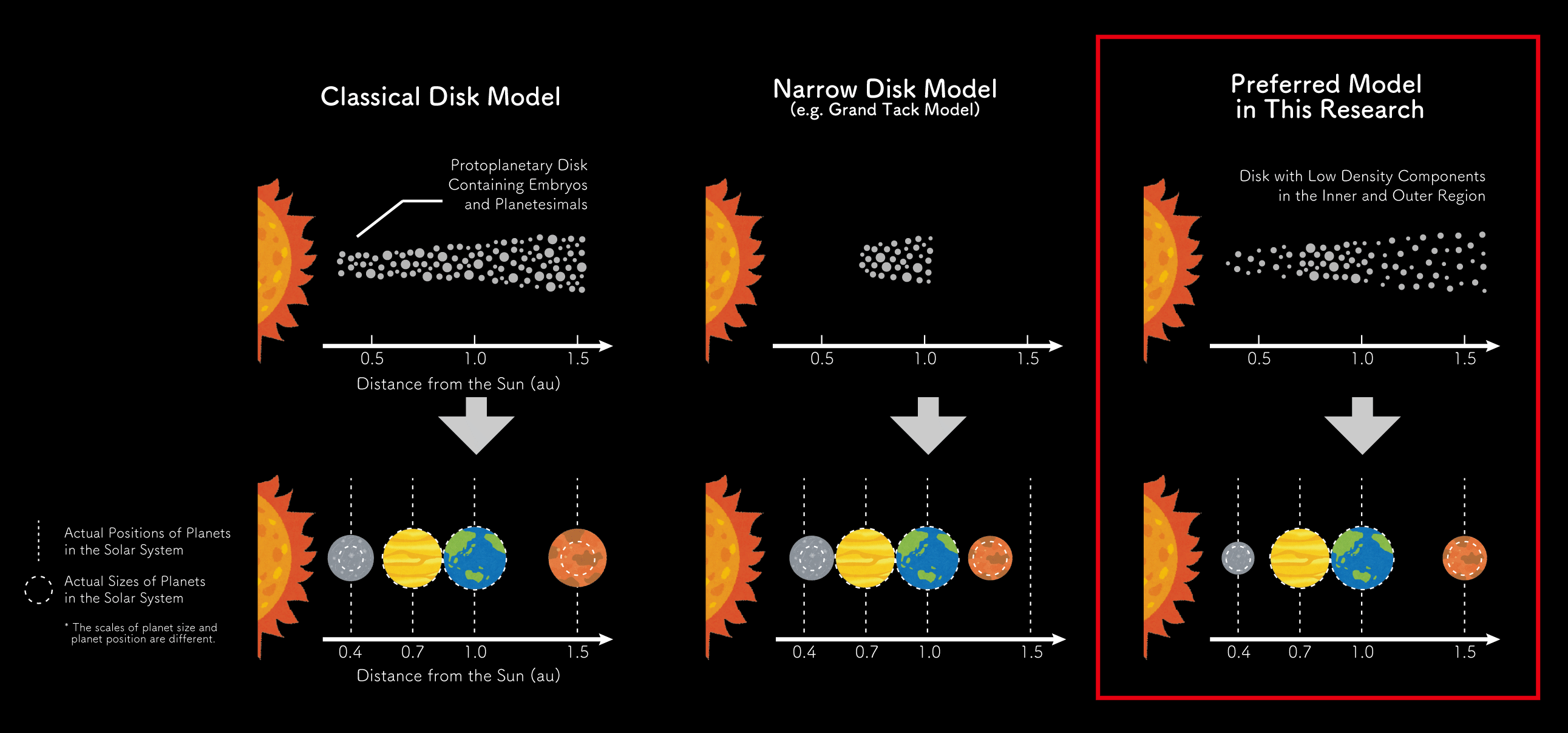Summary
Patryk Sofia Lykawka (an associate professor in Kindai University) and Takashi Ito (an assistant professor in NAOJ) performed a large number of N-body simulations of protoplanetary disks representative of typical models in the literature. The purpose of the calculations was to reproduce the various properties of the current four terrestrial planets. As a result, they found that the truncated disks based on typical outcomes of conventional theoretical models (such as the so-called "Grand Tack" model) do not reproduce well the orbits and mass distribution of the current four terrestrial planets (Mercury, Venus, Earth, and Mars). This result yields new constraints on the formation process of the four terrestrial planets in the Solar System.
(October 11, 2019)

Credit: Patryk Sofia Lykawka (Kindai University), NAOJ
This result was published in the Astrophysical Journal on September 27, 2019. Refer to the news release issued by Kindai University on September 27, 2019 for more details about this work (Japanese only).
Paper Details
Title: Constraining the Formation of the Four Terrestrial Planets in the Solar System
Authors: Patryk Sofia Lykawka, Takashi Ito
Jouenal: The Astrophysical Journal
DOI: 10.3847/1538-4357/ab3b0a
Computers Used in This Research
 All simulations presented in this work were performed using the PC cluster operated at the Center for Computational Astrophysics (CfCA), National Astronomical Observatory of Japan (NAOJ). This cluster is mainly used for small-scale, non-parallel numerical simulations which require a long calculation time with a large number of initial conditions. Currently the cluster is composed of 1344 CPU cores in total. The second author of the paper (Takashi Ito) is deeply involved in the production and operation of the cluster. (Photo Credit: NAOJ)
All simulations presented in this work were performed using the PC cluster operated at the Center for Computational Astrophysics (CfCA), National Astronomical Observatory of Japan (NAOJ). This cluster is mainly used for small-scale, non-parallel numerical simulations which require a long calculation time with a large number of initial conditions. Currently the cluster is composed of 1344 CPU cores in total. The second author of the paper (Takashi Ito) is deeply involved in the production and operation of the cluster. (Photo Credit: NAOJ)
[For the Use of Contents in This Website]
- Contents are to be used with a clear indication of its copyright (e.g. (c) NAOJ.)
- If you would like to use the contents found in this web site, please follow Terms of Use of the Website of NAOJ.
Related Links
Kindai University Press Release for This Research (Japanese Only)
Supplementary information about "Constraining the Formation of the Four Terrestrial Planets in the Solar System"
School of Interdisciplinary Social and Human Sciences, Kindai University
Patryk Sofia Lykawka, Associate Professor (Department of Applied Sociology, Social Science and Mass Media Studies Major)
